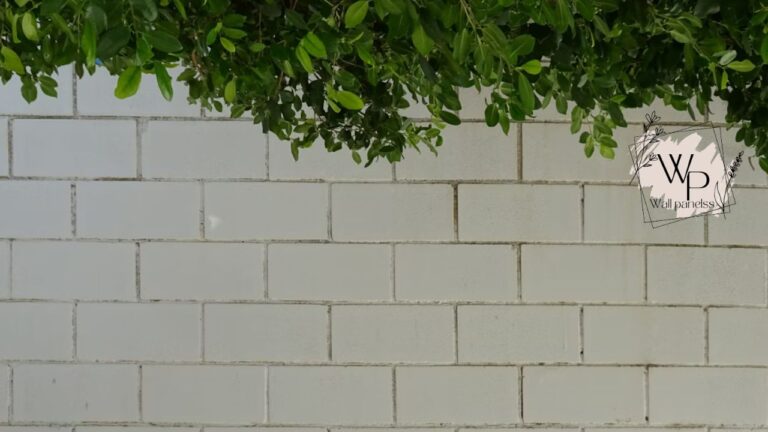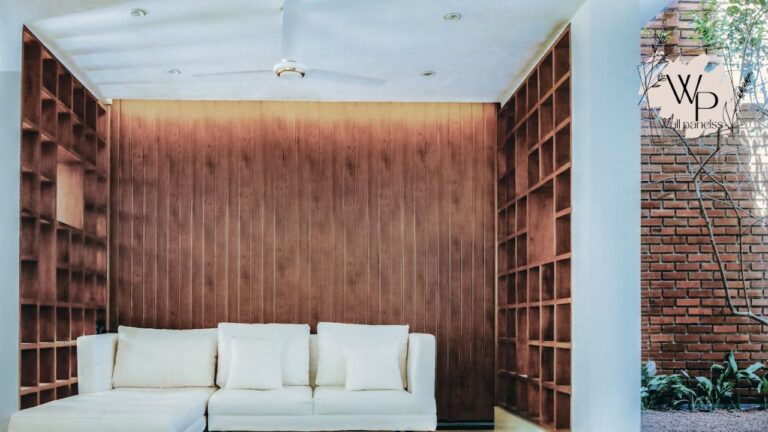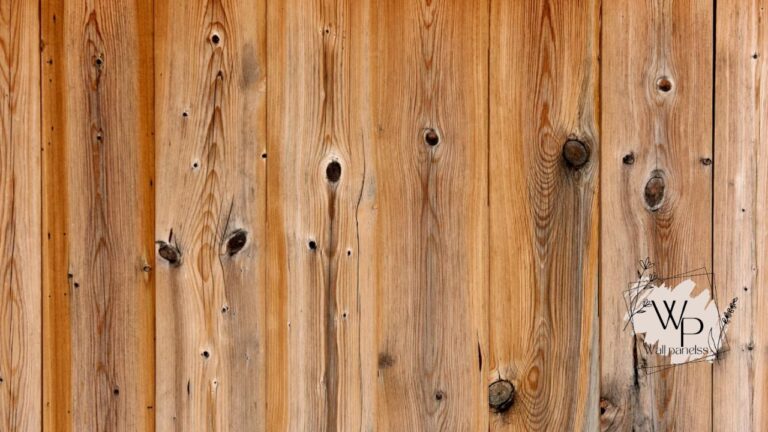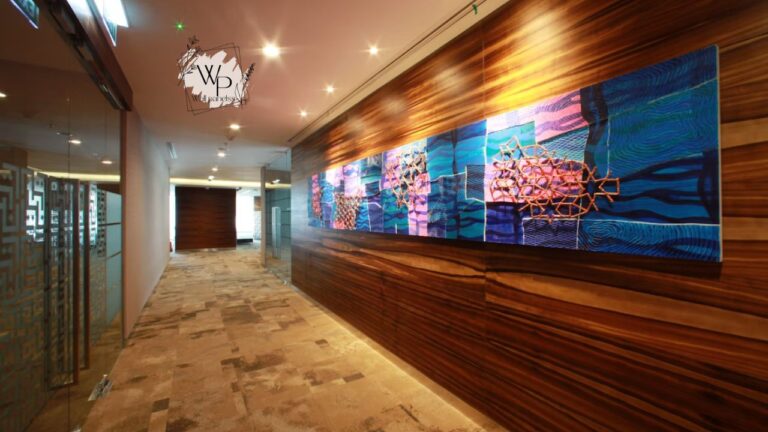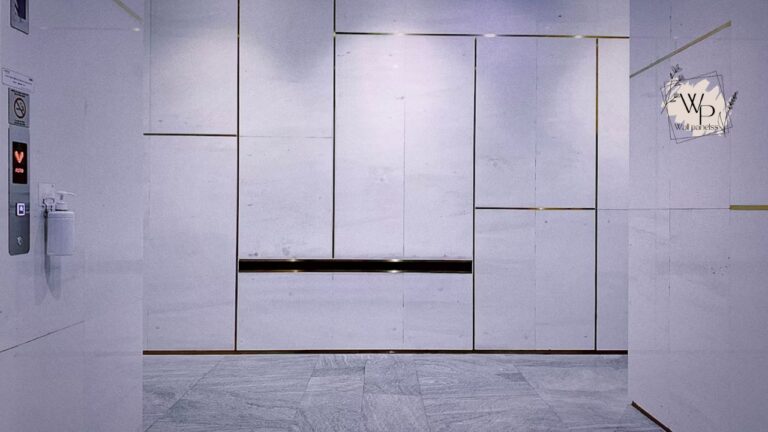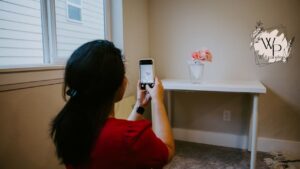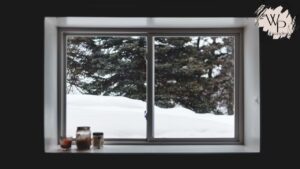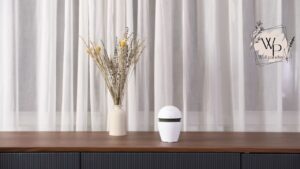Thinking about a home renovation? You’ve likely seen those stunning, seamless walls and wondered how to get the look without breaking the bank. The secret might just be PVC panels, and understanding the real PVC wall panel price is the first step to transforming your space. This isn’t just about a single number; it’s a mix of panel type, design, and installation costs that come together to define your final budget.
For many homeowners, the journey to a fresh interior is often stalled by the daunting prospect of high costs and messy, time-consuming labor. Traditional materials like tiles, wood, or even high-quality paint can quickly add up. This is where PVC wall panels step in as a game-changing alternative, offering an incredible blend of style, durability, and affordability that has homeowners buzzing.
But what will it actually cost you? Let’s dive deep into the world of PVC panels and demystify the PVC wall panel price so you can plan your next project with confidence. We’ll cover everything from basic material costs to the hidden factors that can influence your total spending, ensuring you get the beautiful, long-lasting finish you want at a price you’ll love.
Quick Guide: PVC Wall Panel Price at a Glance
To give you a clear starting point, here’s a summary of what you can expect to pay. Keep in mind these are estimates, and the final PVC wall panel price will vary based on your specific choices and location.
| Panel Type | Average Price per Square Foot (Material Only) | Key Features & Best Use Cases |
|---|---|---|
| Standard/Utility PVC Panels | $2 – $5 | Simple, flat colors; functional. Ideal for garages, utility rooms, commercial kitchens. |
| Decorative/3D PVC Panels | $5 – $12 | Textured, geometric, or wave patterns. Perfect for accent walls in living rooms, bedrooms. |
| Marble & Stone Effect Panels | $6 – $15 | Mimics the look of real marble, granite, or slate. Great for bathrooms, kitchens, and feature walls. |
| Wood Effect PVC Panels | $5 – $13 | Replicates various wood grains and finishes. Suitable for living areas, offices, and bedrooms. |
| High-Gloss & Metallic Panels | $8 – $20+ | Sleek, modern, and reflective finishes. Used in contemporary kitchens, bathrooms, and commercial spaces. |
Unpacking the Factors That Determine PVC Wall Panel Price
When you start shopping, you’ll quickly realize that not all PVC panels are created equal. The PVC wall panel price is a reflection of several key variables. Understanding these components will help you navigate your options and find the perfect balance between aesthetics and budget. It’s an empowering feeling to know exactly what you’re paying for.
The Core of the Cost: Material Quality and Type
The biggest driver of the PVC wall panel price is the panel itself. The complexity of its design, its thickness, and the manufacturing process all play a significant role.
Standard vs. Designer Panels
The most budget-friendly options are standard or utility-grade PVC panels. These are typically plain, flat sheets in basic colors like white or gray. They are incredibly practical and cost-effective for areas where function trumps form, such as in a workshop, laundry room, or commercial kitchen.
On the other hand, decorative panels command a higher price. This category includes:
- 3D Textured Panels: These panels feature raised geometric shapes, waves, or other intricate patterns that add depth and a dramatic flair to a room. The complexity of the mold and manufacturing process makes them more expensive.
- Printed and Laminated Panels: This is where the magic happens. Advanced printing technology allows PVC panels to flawlessly mimic natural materials. High-resolution images of marble, granite, wood, or brick are laminated onto the PVC core. The realism and quality of this layer are directly tied to the PVC wall panel price.
One homeowner, Sarah from Ohio, shared her experience: “I was devastated when I got a quote for a real marble shower. It was nearly $8,000! I found marble-effect PVC panels online and was skeptical, but the samples blew me away. The whole project, including installation, cost me under $1,500. The result is absolutely stunning, and everyone thinks it’s real stone.”
Thickness and Durability
Panel thickness is another crucial factor. Standard panels might be around 5mm thick, which is perfectly fine for most residential accent walls. However, for high-traffic areas or commercial applications, you might opt for thicker panels, often 8mm to 10mm.
These thicker panels are more robust and resistant to impact. They also tend to have a more substantial feel and can offer slightly better insulation properties. As you’d expect, this increased durability comes with a higher PVC wall panel price. The investment, however, can be incredibly worthwhile for long-term peace of mind.
The Finish Line: Surface Treatments and Coatings
The final finish applied to a panel can significantly affect its appearance, performance, and cost.
- Matte Finish: A simple matte finish is standard and the most affordable. It’s easy to clean and doesn’t show fingerprints as much, making it a practical choice.
- High-Gloss Finish: For a sleek, modern, and reflective look, high-gloss panels are a fantastic option. This finish requires additional manufacturing steps, including applying a UV-cured lacquer, which increases the PVC wall panel price. The result is a brilliantly shiny surface that can make a room feel brighter and more spacious.
- Scratch-Resistant & UV Coatings: Premium panels often come with special protective coatings. A scratch-resistant layer is a lifesaver in busy households with kids or pets. A UV-protective coating prevents the printed designs from fading over time, especially in rooms that get a lot of direct sunlight. These value-added features contribute to a higher initial cost but pay dividends in longevity.
Brand Reputation and Where You Buy
Just like with any product, brand names matter. Established brands that have invested in research, development, and quality control often charge more. They typically offer better warranties, more consistent product quality, and reliable customer support. While a generic, unbranded panel might have a lower upfront PVC wall panel price, it could be a gamble in terms of color consistency and long-term durability.
Where you purchase the panels also impacts the cost.
- Big-Box Retailers: Stores like Home Depot or Lowe’s offer convenience and competitive pricing on a range of standard options. You can see the panels in person, which is a huge plus.
- Specialty Bathroom & Kitchen Showrooms: These stores often carry higher-end, designer brands. The PVC wall panel price will be higher, but you’ll get expert advice and access to more unique designs.
- Online Retailers: The internet offers the widest selection, from budget-friendly options on Amazon to direct-from-manufacturer sites. You can often find the best deals online, but be sure to factor in shipping costs and always order samples before committing to a large purchase.
Breaking Down the Full Project Cost: Beyond the Panels
The sticker price on the panels is only one part of the equation. To get a true sense of your total investment, you need to account for installation, tools, and other necessary materials. A comprehensive budget is the key to a stress-free renovation.
The DIY Route vs. Professional Installation
One of the most appealing aspects of PVC panels is their DIY-friendly nature. For a handy homeowner, this can lead to massive savings on labor costs.
Calculating DIY Installation Costs
If you decide to install the panels yourself, your main costs will be for tools and supplementary materials. You’ll likely need:
- Adhesive: A high-quality panel adhesive is crucial for a secure, long-lasting bond. Expect to pay $15 – $30 per tube, with each tube covering a few panels.
- Trims and Edging: To get a professional, finished look, you’ll need trims for corners, edges, and seams. These are typically sold in 8-foot lengths and can cost between $10 and $40 per piece, depending on the finish.
- Tools: You’ll need a tape measure, a level, a caulking gun, and a fine-toothed saw or utility knife for cutting the panels. If you don’t already own these, this could add $50 – $100 to your budget.
While the DIY approach has a lower PVC wall panel price in terms of cash spent, remember to factor in your time. A simple accent wall might take an afternoon, but a full bathroom could take a weekend.
The Cost of Hiring a Professional
If you’re not comfortable with DIY or are short on time, hiring a professional is a great option. Labor costs for installing PVC panels can range from $4 to $10 per square foot. The exact rate depends on your location, the complexity of the job (e.g., lots of cuts around windows or fixtures), and the contractor’s experience.
For a standard 8’x5′ shower area (around 100 sq ft of wall space), you might expect to pay between $400 and $1,000 in labor. While this adds to the total PVC wall panel price, the benefits are significant: a flawless, professional finish, a warranty on the labor, and the job completed quickly and efficiently. It removes all the stress and guarantees a beautiful outcome.
Mark, a contractor with 15 years of experience, explains: “I’ve seen a huge increase in requests for PVC panels. For me, it’s a fast install. For the homeowner, it’s a waterproof, mold-proof solution that looks high-end. The overall PVC wall panel price for a pro install is often half the cost of a traditional tile job when you factor in all the labor for tiling, grouting, and sealing.”
Hidden Costs and Budgeting Tips
A smart renovator always plans for the unexpected. Here are a few potential hidden costs to be aware of:
- Wall Preparation: PVC panels can be installed over existing tiles or drywall, but the surface must be relatively clean and flat. If your walls are in poor condition and require significant repair or plastering, this will add to your project cost.
- Waste Factor: You should always buy about 10% more paneling than your measurements require. This accounts for mistakes, mis-cuts, and any damaged pieces. This contingency is a crucial part of your PVC wall panel price calculation.
- Shipping and Delivery: If you’re ordering online, shipping for large, bulky items like wall panels can be expensive. Always check the shipping fees before you check out.
Comparing PVC Panels to Other Wall Coverings
To truly appreciate the value proposition of PVC panels, it helps to compare them to traditional alternatives. The attractive PVC wall panel price is even more compelling when you see how it stacks up against other materials in terms of both initial cost and long-term value.
PVC Panels vs. Ceramic & Porcelain Tiles
Tiles are a classic choice, especially for bathrooms and kitchens. They are durable and offer a timeless look. However, the cost can be substantial.
- Material Cost: While you can find basic ceramic tiles for as low as $2 per square foot, designer porcelain or natural stone tiles can easily exceed $25 per square foot.
- Installation Cost: This is where tiles become truly expensive. Professional tile setting is a skilled trade. Labor costs can range from $10 to $20 per square foot, and that doesn’t include the cost of mortar, grout, and sealant.
- Maintenance: Grout lines are porous and can stain. They require regular cleaning and periodic resealing to prevent mold and mildew growth. This long-term maintenance adds to the overall cost of ownership.
In contrast, PVC panels are non-porous and have no grout lines. They are installed in large sheets, making the process much faster and less expensive. The excellent PVC wall panel price for the complete project makes it a clear winner for budget-conscious renovators who don’t want to compromise on a waterproof finish.
PVC Panels vs. Natural Wood Paneling
Wood paneling can bring warmth and character to a room, but it comes with its own set of challenges and costs.
- Material Cost: The price of wood varies dramatically by species. Pine or beadboard might be relatively affordable, but hardwoods like oak, cherry, or walnut can be extremely expensive, often running $15 to $40+ per square foot.
- Installation: Installing wood paneling requires carpentry skills and specialized tools. It can be a labor-intensive process.
- Durability: Wood is not suitable for high-moisture environments like bathrooms, as it is susceptible to warping, rot, and mold. It also requires regular maintenance, such as staining or sealing.
Wood-effect PVC panels offer the aesthetic of real wood without any of the drawbacks. They are fully waterproof, easy to install, and require no maintenance. This makes the PVC wall panel price incredibly competitive, providing the look of luxury wood in any room of the house.
PVC Panels vs. Paint or Wallpaper
Paint is the most common and affordable wall covering. Wallpaper offers a huge variety of patterns and textures. How do PVC panels compare?
- Durability: A quality paint job might last 5-7 years before it needs refreshing. Wallpaper can be prone to peeling in humid areas and can be easily torn or scuffed. PVC panels, however, are built to last for decades. They are impact-resistant, waterproof, and won’t fade or peel.
- Application: While painting seems easy, achieving a professional finish requires significant prep work: cleaning, patching, sanding, and priming. Wallpapering can be a frustrating and messy experience for a novice. PVC panels can often be installed directly over the existing surface with far less prep.
- Long-Term Value: While the initial PVC wall panel price is higher than a can of paint, their longevity and durability offer superior long-term value. You won’t have to worry about redecorating again for a very long time, which is a powerful and comforting thought.
Real-World Applications and User Reviews
The true test of any product is how it performs in real homes. The feedback from homeowners who have made the switch to PVC panels is overwhelmingly positive.
Living Room Accent Walls:
Many users choose 3D or wood-effect panels to create a stunning focal point in their living room. A user on a popular home improvement forum rated their 3D panels 5/5 stars, saying, “We installed a wave-pattern 3D panel behind our TV. It was an amazing weekend project. The way the light plays on the texture is incredible. It completely elevated the room for a fraction of the cost of custom carpentry. The PVC wall panel price was totally worth it for the ‘wow’ factor.”
Bathroom Renovations:
This is where PVC panels truly shine. Their waterproof nature makes them a perfect, grout-free alternative to tiles.
A review from a verified online purchase: “4.8/5 Stars. I dreaded the thought of re-tiling my shower. The mess, the cost, the time. I found these marble-effect PVC panels and decided to take a chance. Best decision ever! They were installed in a single day right over my old tiles. Cleaning is a breeze—just wipe them down. No more scrubbing grout! The final PVC wall panel price for the project was a third of the tile quote I received.”
Commercial Use:
Business owners also appreciate the benefits. The owner of a small cafe commented: “We used high-gloss white PVC panels for our kitchen walls. They meet health code requirements, they are ridiculously easy to sanitize, and they make the space look bright and clean. The initial PVC wall panel price was a smart investment because we save so much time on cleaning every single day.”
The Final Verdict: Is the PVC Wall Panel Price Worth It?
After breaking down all the components—from material types and finishes to installation and long-term value—the answer is a resounding yes. PVC wall panels offer a phenomenal combination of style, durability, and affordability that is hard to beat.
The key is to approach your project with a clear plan. Determine your budget, carefully measure your space, and always order samples to see how the panels look in your home’s lighting. Whether you’re a DIY enthusiast looking for a quick and impactful upgrade or a homeowner planning a major renovation with a professional, PVC panels provide a versatile and cost-effective solution.
The initial PVC wall panel price might seem higher than a bucket of paint, but it’s an investment in a hassle-free, beautiful, and long-lasting finish. You are paying for a waterproof, mold-resistant, easy-to-clean surface that will look fantastic for years to come. It’s the smart, modern way to achieve a high-end look without the high-end cost, freeing you from the endless cycle of maintenance and redecorating.
Frequently Asked Questions (FAQs)
1. How long do PVC wall panels last?
High-quality PVC panels are incredibly durable and can easily last for 15-20 years or even longer. Unlike paint or wallpaper, they are resistant to fading, impact, and moisture, so they maintain their appearance for a very long time. This longevity is a key factor in the excellent overall value represented by the PVC wall panel price.
2. Can I install PVC panels over my existing tiles?
Yes, in most cases! This is one of the biggest advantages of PVC panels. As long as your existing tiles are securely attached to the wall and the surface is relatively even, you can install the panels directly on top using a suitable adhesive. This saves a tremendous amount of time, money, and mess associated with tile removal.
3. Are PVC wall panels fully waterproof for a shower?
Absolutely. PVC itself is a type of plastic and is 100% waterproof. When installed correctly with silicone sealant in the joints and around the edges, they create a completely watertight and seamless surface, making them an ideal and popular choice for showers, bathtubs, and wet rooms.
4. How do I clean and maintain PVC wall panels?
Maintenance is incredibly simple. Because they have a smooth, non-porous surface and no grout lines, a simple wipe-down with a soft cloth and warm, soapy water is all that’s needed to keep them clean. Avoid using abrasive scouring pads or harsh chemical cleaners, as they could dull the finish.
5. Does the PVC wall panel price include installation?
Generally, no. The price you see advertised is usually for the panels themselves (per panel or per square foot). You will need to budget separately for installation, whether that means purchasing adhesive and tools for a DIY project or hiring a contractor. Always clarify what’s included when you get a quote.
6. Are PVC panels environmentally friendly?
This is a growing consideration for many consumers. PVC panels have a long lifespan, which reduces the need for replacement. Additionally, many modern PVC panels are 100% recyclable. Look for manufacturers that are committed to sustainable practices. While the initial production is energy-intensive, their durability and recyclability contribute positively to their overall environmental footprint.
Admin Recommendation
WallPanel Home Assistant Idle: The Ultimate Guide to Smart Home Displays


